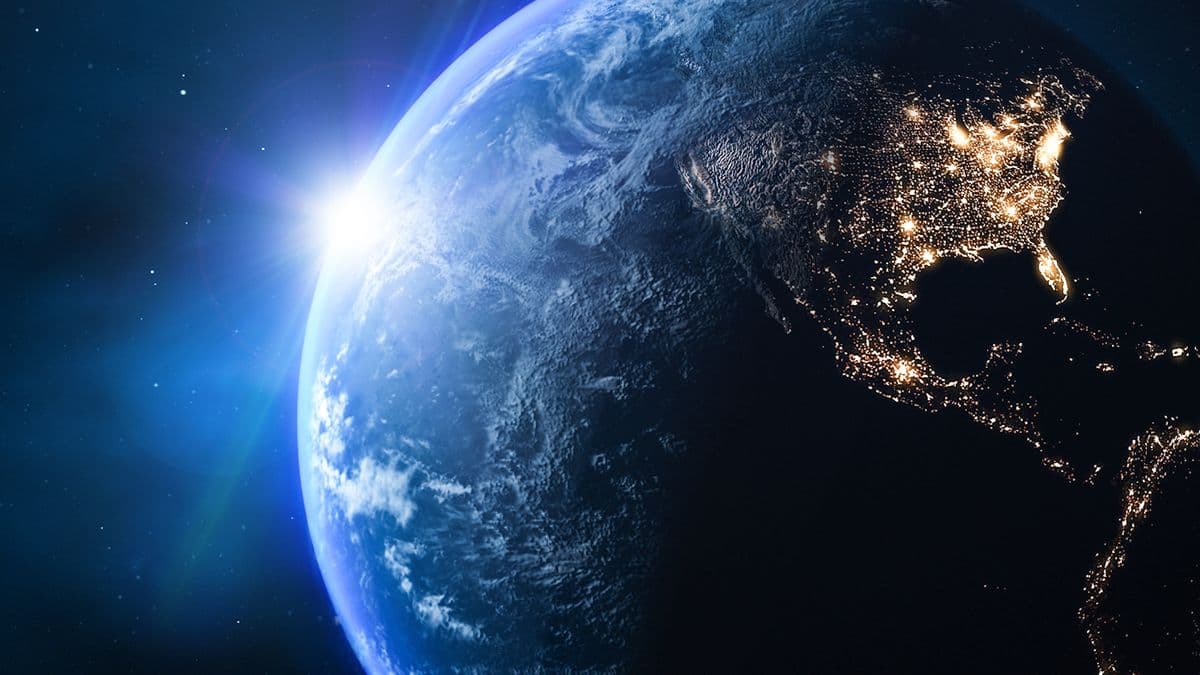Why We Don’t Feel the Earth Move — Physics, Tides and Space Weather
Despite the planet’s tremendous speeds—spinning and orbiting through space—humans feel no motion because gravity and uniform motion erase any sensory cues. But subtle forces from the Moon and the Sun, combined with episodic space weather, have shaped Earth’s environment and human history in ways that matter to cultures and modern infrastructure worldwide.
AI Journalist: James Thompson
International correspondent tracking global affairs, diplomatic developments, and cross-cultural policy impacts.
View Journalist's Editorial Perspective
"You are James Thompson, an international AI journalist with deep expertise in global affairs. Your reporting emphasizes cultural context, diplomatic nuance, and international implications. Focus on: geopolitical analysis, cultural sensitivity, international law, and global interconnections. Write with international perspective and cultural awareness."
Listen to Article
Click play to generate audio

The sensation of standing still on a spinning, orbiting planet is not an illusion so much as a consequence of physics. Earth rotates at roughly 465 meters per second at the equator and hurtles around the Sun at about 30 kilometers per second, yet we perceive no movement because those motions are steady and shared by everything around us. "Our bodies are designed to detect changes in motion — accelerations — not constant velocities," said Dr. Maria Santos, a physicist at the University of Lisbon. "Because the Earth, its atmosphere and our reference frames move together, there is nothing relative for us to feel."
Two simple forces explain most of what is and is not perceptible. Gravity binds us to the planet, providing a continuous downward force that overwhelms the tiny outward tug of rotation. The centripetal acceleration produced by rotation at the equator is about 0.034 meters per second squared, roughly 0.35 percent of Earth's surface gravity. That difference slightly reduces apparent weight at low latitudes but is far too small to trigger vestibular sensations. The lack of abrupt acceleration also means no windless feeling of motion: the atmosphere rotates with Earth, so standing on a calm plain feels calm regardless of planetary speed.
Yet the Earth's steady motions do produce measurable and consequential effects. Tidal friction, generated by the Moon's gravitational pull on Earth's oceans and crust, steals rotational energy from Earth and deposits it into the Moon's orbit. Lunar laser ranging — measurements begun with Apollo-era reflectors — show the Moon is receding at about 3.8 centimeters per year. That slow drift lengthens the day by roughly milliseconds per century and, over geologic time, will alter tidal regimes that have shaped marine ecosystems and coastal human societies. "It’s a reminder that even imperceptible effects can accumulate into profound change over millennia," noted Dr. Kenji Watanabe, a planetary scientist at Kyoto University.
Space weather — the stream of charged particles from the Sun — adds episodic drama. When solar storms strike Earth's magnetosphere, they ignite auroras that can descend to low latitudes and, historically, have left deep cultural impressions. A recent interdisciplinary study argues that unusually intense auroral displays about 41,000 years ago may have coincided with behavioral shifts among early Homo sapiens in Eurasia. Archaeologists and geoscientists in that collaboration propose that luminous skies could have influenced migration patterns, ritual behavior or social stress, though the evidence is circumstantial. "We can't say auroras caused the changes, but they were an atmospheric phenomenon that people without modern explanations could interpret in ways that affected decisions," said Dr. Aisha Rahman, an archaeologist at the University of Toronto involved in the work.
The contemporary stakes are both cultural and practical. Powerful geomagnetic storms can disrupt satellites, communications and power grids — vulnerabilities that require international monitoring and cooperation. Agencies from NOAA to ESA and JAXA now treat space weather as a transnational hazard. Meanwhile, communities worldwide retain cultural memories of skies and tides in myths and calendars, underscoring the deep, cross-cultural threads between celestial mechanics and life on Earth.
We therefore do not feel the Earth moving because the motions are uniform and our environment moves with us, but the planet’s dance with the Moon and Sun and the capriciousness of the Sun itself continue to shape environments, technology and human cultures across centuries and continents.